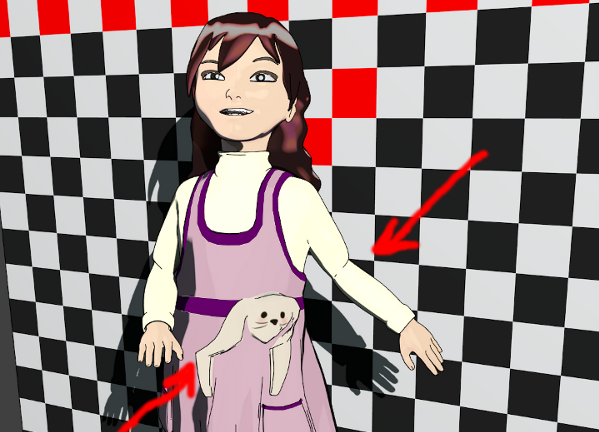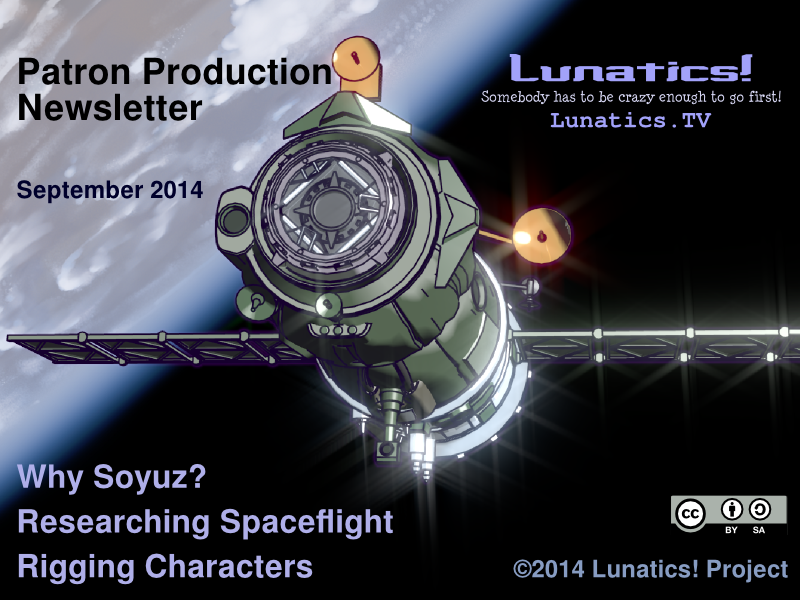Why Soyuz?
Briefly, there are three separate kinds of reasons that favor Soyuz: production, aesthetic, and plot.
Production
We set this story in 2040. Originally, we were going to make it closer to 2020, but as we examined the backstory we needed to explain the “present” of the story, we found there was a little too much to fit into just 9 years!
I suspect the next star American system for transportation to LEO will be a commercial one. But we don’t know which one, and whatever it is, it likely won’t still be flying in 2040. American spaceflight tends to have a lot of turn over in design.
What this means for me as a science-fiction producer is that any American system I come up with will be pure science fiction. It is unrealistic to think that any American system running today will still be operating in 2040.
Meanwhile, what are the Russian flying now? Soyuz. What were they flying 40 years ago? Soyuz.
Certainly, to the trained eye, the Soyuz of 1967 was a very different creature from the Soyuz of 2011, and no doubt, the Soyuz of 2040 will be even more different. However, there’s at least a plausible chance that Soyuz will still be flying in 2040, even if there are many other options available.
The Russians have had a very conservative approach to space engineering — preferring to tweak and improve an existing concept rather than reinventing everything from the ground up every few years. There’s no criticism in this either way — each approach has pros and cons.
But from a plot perspective, flying Soyuz means we can have our characters go into space on a spacecraft that looks essentially identical to what they would go up on today. Soyuz is the only fully documented, existing spacecraft, which will plausibly still be flying in 2040.
And that gives our story the immediacy and realism that we wanted.
Aesthetics
Secondly, the Soyuz is part of a “progression from the past into the future” that we see on screen in the pilot episode: we start with 19th Century technology — a train, we move on to early 20th century technologies of cars and buses, then to the spaceport where we encounter the late 20th century Soyuz. Later we’ll encounter the early 21st century International Space Station and finally the mid-21st century “Lunar Transportation System” that brings us to the 2040s era.
This is a statement about technological progress and continuity. Using an existing space transportation system for the Earth-to-LEO leg of the journey helps to sell that continuity in a way that I don’t think we could get from any science-fictional launch system.
Also, there have been lots of dramatizations of American Saturn V and Shuttle launches in movies, but not many Soyuz launches, and I don’t feel that it has yet been done justice. The Soyuz is a beautiful, brilliantly-designed spacecraft (and support system), and it’s fun to model and animate.
Plot Reasons
Finally, of course, we have to explain why the Soyuz is being used within the story world. This is ultimately because Anya Titova is involved in the ISF colony project. Her company was entitled to a certain number of Soyuz flights as part of an earlier contract. But by 2040 the Soyuz is becoming less desireable for satellite payloads, so she doesn’t really have a very good use for it — except of course that it is perfect for this flight.
The Soyuz also has a really long record and remains one of the safest spaceflight systems. As we extrapolate thirty years into the future, it will be even longer. And it’s not too surprising that Rob and Hiromi Lerner are going to pick the safest ride around for their daughter to fly into space. It’s also a fairly gentle ride, compared to what the Shuttle was like.
But of course, we don’t assume everyone got into space this way. We meet Josh and Tim already on the Space Station, and while it’s not explained, it’s apparent they came up on an American flight.
Researching Spaceflight
Well that’s the why, but what about the how? It’s not that easy to document a flight into space on the Soyuz when you’ve never been to Russia or Kazakhstan. We did a lot of research into plans, designs, photographs, written articles, videos from NASA and RosCosmos and personal accounts.
Terry Hancock has been closely following blogs and social media posts published by Italian EU astronaut, Samantha Cristoforetti, who has taken an enormous number of photos during her training for her upcoming ISS mission. These are some amazing photos, and they fill in a lot of the gaps in the official NASA and RosCosmos documents.
For the surrounding area, especially the town of Baikonur, we’ve been very dependent on photos taken by tourists, as there is no Google streetview for Baikonur, Kazakhstan!
Fortunately, space tourism is a thing, and a lot of people have gone to Baikonur to watch launches, taking photos along the way. Studying these photos night and day for months, I almost feel as if I’ve been to that dusty and chilly little desert town with its much greater-than-average population density of monuments, but the fact is that I have never been within five thousand kilometers of it. I’m sure we’ll inevitably miss some details, but we’re doing our best to make you feel like you’ve been there, too.
Photos of the Soyuz launch system are tricky. There are a lot of photos of certain key elements and events. But some things rarely get photographed.
Rigging Characters
I had hoped we would have our preview video up by now, but we are still working on rigging the Georgiana character to do the character scenes we want to include (there’s also some work to do on sets, but it’s the character rigging that has been the slowest).
Unfortunately, we do not really have a true character rigging expert at this point. Rigging isn’t that hard, and at least two of us (Keneisha Perry and Bela Szabo) would be able to rig a character, especially by using the Rigify script. But there’s a difference between rigging as a minimal skill and being able to create a high quality rig for extensive and subtle animation. So it’s a pretty big challenge.

I did consult briefly with Nathan Vegdahl, who as you may know, is something of a star Blender character rigging expert. He’s the guy who did the rigs for both Big Buck Bunny and Sintel for the Blender Institute. And he’s the guy who wrote the Rigify script.
This made me feel more secure that we were on the right track, but it’s still basically a problem of using rigify to create bones for the character body, and then we have to get a good weight paint, and possibly use other techniques to tweak the rig.
Also, Rigify doesn’t do anything for faces.
For that, Keneisha and I have been studying the facial rig in the “Sintel Lite” model available from BlendSwap. This has an interesting approach of using custom bone properties to create slider controls for the character’s expressions. This is a nice, user-friendly interface, so we’re emulating it. But there’s a certain amount of trial and error, because neither Keneisha or I have really done this before!
However, I think Keneisha is finally on track with it, and I expect we’ll be able to start testing out the rig in a week or less.
Other Progress
During this time, I have been painting “billboard” plants to use in particle systems for the vegetation in Baikonur and at the Baikonur Cosmodrome. These are simple two-dimensional paintings of the plants (in a somewhat impressionistic style), which are then distributed with a constraint that they point at the camera. This creates a pretty good illusion of 3D plants, which you can see in the railroad video I did earlier:
Painted billboard plants can look remarkably good, at least if the camera angle doesn’t change a lot.
I have also done SVG “pavement maps” of the streets, sidewalks, and plantings at the two monument sites in Baikonur that we are using (one is the “Stele to Science and Space” and the other is the “Glory to the Conquerors of Space” monument). These will eventually imported into Blender, given depth, and converted into landscape models. But I have not really started on the conversion (I published an earlier version of the “Stele to Science and Space” monument, but it didn’t include all of the details, and it’s still a bit too flat.
Video Feature: Tour of the Project’s Web Resources
Finally, let me take you on a brief tour of our project website, and get you acquainted with where things are on the project and what we have available. This will be the first in a series of behind-the-scenes videos, for both interested patrons and people working on the project:
(Imported from September 2014 Newsletter HTML)

